Skip to main contentProvenanceThe artist
Aaron Galleries, Chicago, Illinois
Terra Foundation for the Arts Collection, Chicago, Illinois, 1993 (gift of Aaron Galleries)
Exhibition HistoryPublished References
Emil Bisttram
(American, 1895–1976)
Dancing Figures
1941
Crayon, graphite and watercolor on tan wove paper
Overall: 12 x 18 in. (30.5 x 45.7 cm)
Credit LineTerra Foundation for American Art, Gift of Aaron Galleries
Object numberC1993.27
SignedLower right: BISTTRAM/41
InterpretationBlack, brownish-red, and white dancing figures, reduced to flat, angular, yet recognizable shapes, overlap and interweave as they spread across a flat field of light-brown and dull yellow in Emil Bisttram's Dancing Figures. Speckles of blue, flicked directly from the brush to adhere most visibly to the white forms, relieve the earth-tones of the painting. The arrangement of the figures and the alternating positions of arms and heads create a rhythmic pattern, evoking the drum-beat of a ritual dance. Bisttram's composition also can be read as a random arrangement of abstract shapes with contrasting angles, their earthy colors complemented by the sketchy application of the crayon medium to highlight the rough texture of the tan paper beneath.
Working in New Mexico, Bisttram was deeply influenced by the art and culture of the region's indigenous inhabitants. Native ritual dances were among the subjects that attracted the artists who flocked to the state beginning at the turn of the twentieth century. Bisttram was one of many artists who went beyond picturing Indian subjects to incorporate in the formal aspects of their art their deeper understanding of native life. Inspired by native dance, Dancing Figures uses a deliberately naive stylistic vocabulary and forms reminiscent of the ancient pictographs carved into rock faces in many places in the American Southwest. At the same time, the angular patterning of this work, which can be described as calligraphic, and the seemingly random distribution of figures across the field anticipate the rise of "all-over" painting, an important facet of the modernist movement known as Abstract Expressonism, which was germinating elsewhere in the United States during the decade of the 1940s.
With their heads and arms creating pinwheel patterns, Bisttram's dancing figures unavoidably evoke the swastika, an ancient symbol with origins in Native American cultures as well as Hindu India. Although New Mexico in 1941 was remote from the war raging across Europe, the East-European-born Jewish artist surely associated the swastika also with Nazi Germany and its extremist dogma of racial purity. In Dancing Figures, however, the black, white, and red colors of these forms suggest the diverse populations that coexisted, if uneasily, in his adopted country.
Working in New Mexico, Bisttram was deeply influenced by the art and culture of the region's indigenous inhabitants. Native ritual dances were among the subjects that attracted the artists who flocked to the state beginning at the turn of the twentieth century. Bisttram was one of many artists who went beyond picturing Indian subjects to incorporate in the formal aspects of their art their deeper understanding of native life. Inspired by native dance, Dancing Figures uses a deliberately naive stylistic vocabulary and forms reminiscent of the ancient pictographs carved into rock faces in many places in the American Southwest. At the same time, the angular patterning of this work, which can be described as calligraphic, and the seemingly random distribution of figures across the field anticipate the rise of "all-over" painting, an important facet of the modernist movement known as Abstract Expressonism, which was germinating elsewhere in the United States during the decade of the 1940s.
With their heads and arms creating pinwheel patterns, Bisttram's dancing figures unavoidably evoke the swastika, an ancient symbol with origins in Native American cultures as well as Hindu India. Although New Mexico in 1941 was remote from the war raging across Europe, the East-European-born Jewish artist surely associated the swastika also with Nazi Germany and its extremist dogma of racial purity. In Dancing Figures, however, the black, white, and red colors of these forms suggest the diverse populations that coexisted, if uneasily, in his adopted country.
Aaron Galleries, Chicago, Illinois
Terra Foundation for the Arts Collection, Chicago, Illinois, 1993 (gift of Aaron Galleries)
Exhibition History
Figures and Forms: Selections from the Terra Foundation for the Arts, Terra Museum of American Art, Chicago, Illinois (organizer). Venue: Terra Museum of American Art, Chicago, Illinois, May 9–July 9, 2000.
L'Amérique et les modernes, 1900–1950 (American Moderns, 1900–1950), Musée d'Art Américain Giverny, France (organizer). Venue: Musée d'Art Américain Giverny, France, July 25–October 31, 2000. [exh. cat.]
L'Amérique et les modernes, 1900–1950 (American Moderns, 1900–1950), Musée d'Art Américain Giverny, France (organizer). Venue: Musée d'Art Américain Giverny, France, July 25–October 31, 2000. [exh. cat.]
Gustafson, Elaine D. and Susan E. Strickler. The Second Wave: American Abstraction of the 1930s and 1940s. Worcester, Massachusetts: Worcester Art Museum, 1991, pp. 114–15.
Cartwright, Derrick R. and Paul J. Karlstrom. American Moderns, 1900–1950. (exh. cat., Musée d'Art Américain Giverny). Chicago, Illinois: Terra Foundation for the Arts, 2000. Text p. 60 (checklist); pl. 5, p. 32 (color).
Cartwright, Derrick R. and Paul J. Karlstrom. L'Amérique et les modernes, 1900–1950. (exh. cat., Musée d'Art Américain Giverny). Chicago, Illinois: Terra Foundation for the Arts, 2000. Text p. 60 (checklist); pl. 5, p. 32 (color).
Cartwright, Derrick R. and Paul J. Karlstrom. American Moderns, 1900–1950. (exh. cat., Musée d'Art Américain Giverny). Chicago, Illinois: Terra Foundation for the Arts, 2000. Text p. 60 (checklist); pl. 5, p. 32 (color).
Cartwright, Derrick R. and Paul J. Karlstrom. L'Amérique et les modernes, 1900–1950. (exh. cat., Musée d'Art Américain Giverny). Chicago, Illinois: Terra Foundation for the Arts, 2000. Text p. 60 (checklist); pl. 5, p. 32 (color).


